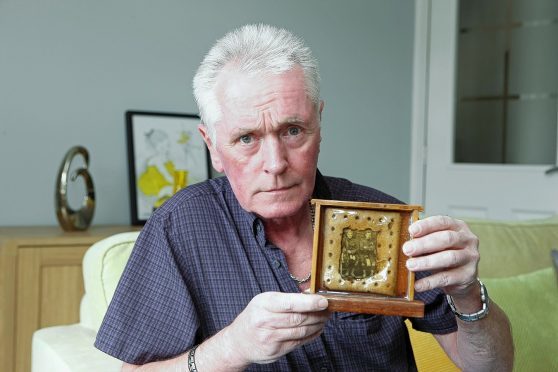For more than 100 years a memento from World War I has puzzled the family of a soldier from Inverness.
Lance Corporal Duncan MacKay, of the Cameron Highlanders, was killed at the Battle of Neuve Chapelle in France in 1915 when he was just 21.
But before he died, he sent home a photograph of himself with a fellow soldier – framed in a British army biscuit.
The only clue Duncan MacKay’s family had to the identity of his comrade was the name, Hugh Ross.
Now 102 years later, the mystery has been solved, thanks to a social media appeal.
John Sutherland, his great-nephew discovered that Hugh Ross not only survived the battle of Neuve Chapelle, but went on to become the provost of Inverness.
David MacKenzie, originally from Inverness but now living in Aberdeen, saw the appeal and got in touch.
He said: “Hugh Ross was my great-uncle. He was brought up in the Dingwall area and later owned a grocery business in Queensgate, Inverness, was elected to the Inverness Town Council and served as provost from 1945-48. He died in 1961.
Mr Sutherland, 54, from Culloden said: “I have been fascinated by the portrait in the biscuit ever since I can remember so it’s great to find out at last who was in the picture with my great-uncle.”
The photo is perfectly preserved in a Number 4 biscuit – a favourite way for soldiers to send pictures home to loved ones.
They were produced by Huntley and Palmer in Reading for the army and were so tough they were referred to as “molar breakers”.
Before they could be eaten they had to be dipped in tea to soften them.
